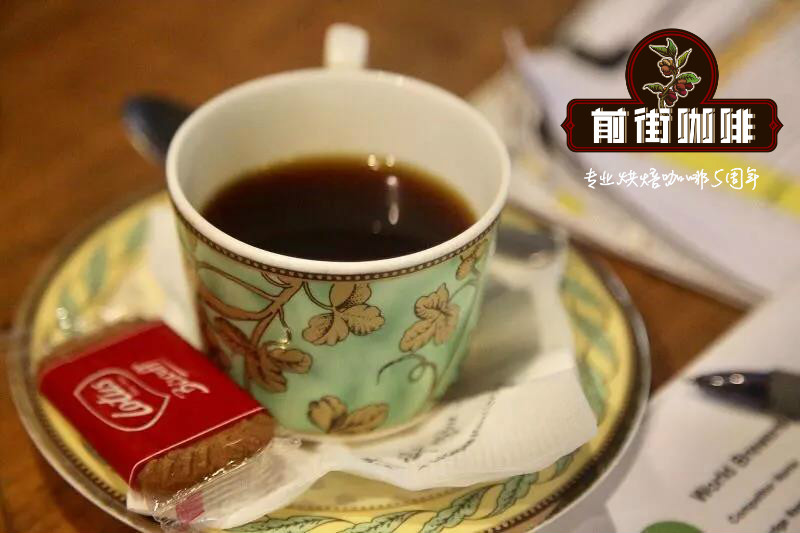Yemeni Coffee planting conditions Yemeni terraced Coffee causes growth Origin Distribution treatment

Professional coffee knowledge exchange more coffee bean information please follow the coffee workshop (Wechat official account cafe_style)
Yemenmoka has always been my favorite, and there are very few coffees with wild, game, wine, fig, mild, changeable, and strong chocolate flavor at the same time. Yemenmoka, once praised as an Arab wine, is a gift from Allah. Precisely because the original coffee trade was exported from the port of Mocha in Yemen, many people mistakenly thought that Yemen was the birthplace of coffee. Up to now, some Europeans are still used to calling coffee mocha. Since the 17th century, coffee beans grown in dry Arabian soil and lack of moisture in the air have been particularly hard and small. Mocha production has been limited by local political upheaval and uneconomical planting. Among them, Yemenmoka is represented by Mattari from Bani Matar, which has a sweet, smooth and unique flavor. Slightly sour and strong aftereffect, I think it is the most suitable Yemeni coffee to drink after a meal, and it is also the best in mocha.
Over the centuries, the rough and primitive method of growing coffee has been slightly improved. Coffee trees are planted in small parks on steep slopes, which are inaccessible areas. The coffee beans grown here are very hard and small because of the dry Arab soil and lack of moisture in the air. The elaborate irrigation system diverts the spring to a trapezoidal coffee garden surrounded by soil and low walls. All this work is done by manpower. Coffee beans are mostly sunburned on the roof or flat ground. Oddly enough, coffee drinks are not very popular in the area where coffee was first drunk, and the way coffee is made is terrible. Coffee juice is usually boiled in bean clips. Small farm farmers are more attentive to cultivating a medicinal plant called qat, because it is popular to chew quarts and neglect coffee trees. Mocha production is still limited by local political upheaval and uneconomical cultivation. Mocha coffee was named after Moka, the earliest Yemeni coffee export port, supplying global coffee commercial transactions until the end of the 17th century.
Since people started drinking coffee, mocha has been recognized as a good coffee with distinctive acidity, and some people think that mocha's special acidity is menacing. That's because after a hard day's work, people's sense of taste becomes dull to delicacy. The coffee itself is very fragrant. Yemenmoka is represented by Mattari produced in Bani Matar. It has a sweet, smooth and unique flavor. The quality of being slightly sour and having strong stamina. Mocha is suitable for mixing with Milds coffee, especially for mixed coffee with Mysso coffee, Indonesian Java coffee and Sumatra coffee. Locals like to make Turkish coffee with a mixture of mocha and Meso. It is the most suitable Yemeni coffee to drink after a meal. It is also the best of mochas.
Important Notice :
前街咖啡 FrontStreet Coffee has moved to new addredd:
FrontStreet Coffee Address: 315,Donghua East Road,GuangZhou
Tel:020 38364473
- Prev

Characteristics of manor treatment in Ecuadorian coffee producing area at the altitude of coffee planting in Ecuador
Professional coffee knowledge exchange more coffee bean information Please follow the coffee workshop (Wechat official account cafe_style) Ecuadorian coffee covers an area of 305.000 hectares, of which Arabigo coffee accounts for 68% and Robusta coffee accounts for 32%. Coffee, cocoa and banana are the three traditional crops of Ecuador, which are not only the source of farmers' income, but also for the country.
- Next

Yunnan coffee growing area where is Yunnan suitable for growing coffee? what are the famous manors of origin?
Professional coffee knowledge exchange more coffee bean information please follow coffee workshop (Wechat official account cafe_style) Yunnan Coffee, Rubiaceae, Coffee Genus, planting areas are mainly distributed in Lincang, Baoshan, Simao, Xishuangbanna, Dehong and other prefectures. Small grains of coffee are native to Ethiopia or Arabian Peninsula. It is cultivated in Fujian, Guangdong, Hainan, Guangxi, Sichuan, Guizhou and Yunnan.
Related
- Does Rose Summer choose Blue, Green or Red? Detailed explanation of Rose Summer Coffee plots and Classification in Panamanian Jade Manor
- What is the difference between the origin, producing area, processing plant, cooperative and manor of coffee beans?
- How fine does the espresso powder fit? how to grind the espresso?
- Sca coffee roasting degree color card coffee roasting degree 8 roasting color values what do you mean?
- The practice of lattes: how to make lattes at home
- Introduction to Indonesian Fine Coffee beans-- Java Coffee producing area of Indonesian Arabica Coffee
- How much will the flavor of light and medium roasted rose summer be expressed? What baking level is rose summer suitable for?
- Introduction to the characteristics of washing, sun-drying or wet-planing coffee commonly used in Mantenin, Indonesia
- Price characteristics of Arabica Coffee Bean Starbucks introduction to Manning Coffee Bean Taste producing area Variety Manor
- What is the authentic Yega flavor? What are the flavor characteristics of the really excellent Yejasuffi coffee beans?

